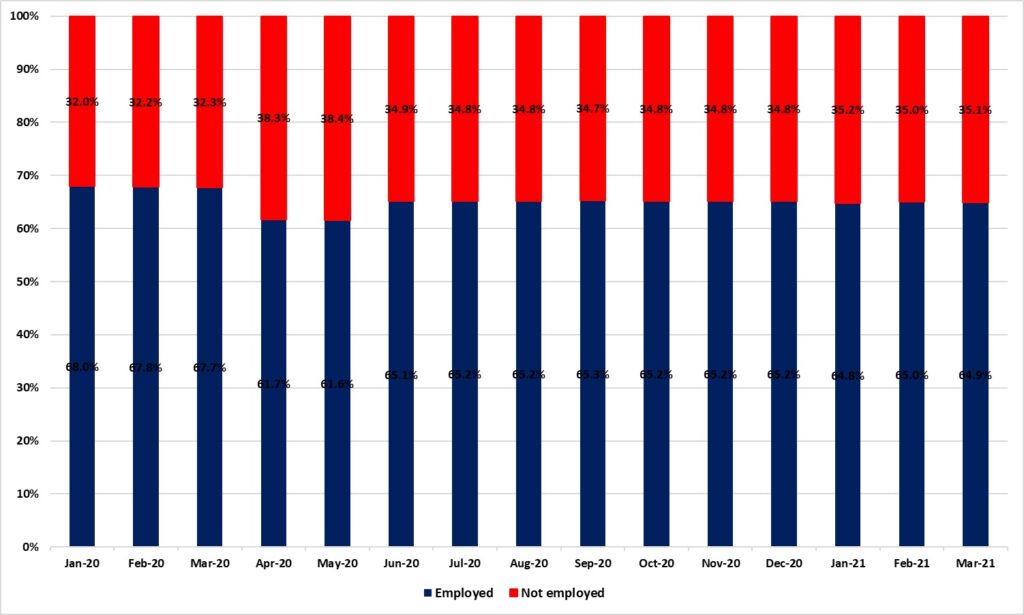The number of Minnesotans not working is on the rise
Minnesota’s unemployment rate ticks down in March; Logging, mining shows strength – International Falls Journal
Unemployment rates fall statewide for third month in a row – KAAL TV
Unemployment rate ticks down in March – Grand Rapids Herald Review
On the face of it, this looks like good news from Minnesota’s labor market as the state recovers from COVID-19 and the government’s responses to it. But the ‘unemployment rate’ is a figure that requires more caution than most.
As I’ve written before, the Bureau of Labor Statistics (BLS) divides Minnesota’s population* up into those in the labor force and those who are not. To be in the labor force you have to be either employed or unemployed but actively looking for employment. If you are unemployed and not looking for unemployment, you simply drift out of the labor force. The unemployment rate is calculated by dividing the number of those people who are unemployed but looking by the total number of people in the labor force, not the population.
It isn’t too clear why the statistics make the distinction between the unemployed who are looking for work and those who aren’t. Both are capable of working. A more accurate measure of unemployed labor in an economy might add both categories together and divide that by the population.
Figure 1 shows that happens if you do. Last month, according to the BLS’ Local Area Unemployment Statistics (LAUS), the population of Minnesota was 4.5 million and 2.9 million of these were employed which leaves a total unemployment of 1.5 million, or 35.1%.
Figure 1: Minnesota’s civilian noninstitutional population, employed and not employed

Source: Minnesota Department of Employment and Economic Development
People who are counted as unemployed and used to calculate the unemployment rate can leave that group in one of two directions. They can move into employment in which case the unemployment rate falls. But they can also move out of the labor force altogether in which case the unemployment rate also falls.
This latter case seems to be a large factor behind those headlines. Since October, Minnesota’s unemployment rate has fallen from 5.3% to 4.2%. Over the same period, both the number of people unemployed and the number of employed have fallen. As a result, the total number of people not working has climbed and the Labor Force Participation rate – the share of the population either employed or unemployed but looking – has fallen, from 68.9% to 67.8%.
Our state’s labor market has taken a battering in the last year. A closer look at the numbers shows that we are not out of the woods yet.
*Technically the civilian noninstitutional population
John Phelan is an economist at the Center of the American Experiment.